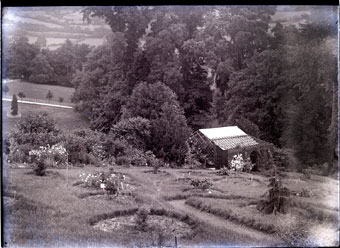Architects, angels and activists
It’s hard not to fall in love with the English city of Bath, with its neoclassical, golden stone architecture, and the surrounding green hills, explains Cynthia Hammond, an associate professor in Concordia’s Department of Art History. “It’s exactly like walking into the past. That was my initial reaction anyway.”
Hammond’s first visit to Bath was during a holiday with her sister 20 years ago. At the time, her Canadian-based art practice consisted of “searching places for beauty.” Her projects enhanced or played off architectural landscapes. But nothing she had yet encountered compared to Bath.

“Bath met my desire for a certain kind of aesthetic, one whose cleaving to tradition, civility and even Britishness I was bound to like,” she writes in the introduction to her new book, Architects, Angels, Activists and the City of Bath.
After that first trip, Hammond returned to Canada determined to find out all she could about the city. As she dug through the layers of Bath’s social and architectural history, Hammond discovered that, in spite of its staid appearance, Bath had experienced all sorts of social upheavals through the years. She also began to realize the important role women had played during the city’s various growth stages; even though they were virtually excluded from the official history of the city’s built environment. She admits that initially, even she herself had neglected to question what role they had played. She writes:
“It was only long after my first visit to Bath ended I realized that, as a feminist, I had forgotten about women. Specifically, I had forgotten to ask myself how women contributed to the story of this beautiful, elitist, maddening place, how women too created the city of Bath.”
Hammond decided to focus her doctoral work on uncovering the untold story of women’s impact on Bath’s built environment. She decided to use a multidisciplinary approach, employing both academic research and her artistic practice to tease out as much of the story as possible.

“My challenge was to find ways in this very carefully managed heritage environment to show what I’d found and to make it public knowledge,” she says. “So I used different types of art strategies — like performance, installation, and more recently community-based art practice — as a way of learning about what people knew about the city and also telling visitors, tourists, residents what I had learned.”
In 2002, Hammond wrapped up her doctoral thesis, Wings, Gender and Architecture: Remembering Bath, England. Some years later, she was encouraged by a fellow academic to turn her work into a book, and she headed back to Bath to see if she had missed anything. As it turned out, she had.
“There’s nothing in the city to tell you that suffragettes by the tens came into town, and in the end made this beautiful landscape,” she says. The beautiful landscape was an arboretum, planted by the suffragettes as a living monument to their movement. The Suffragettes’ Wood was destroyed in the 1960s to make way for a housing project, but Hammond’s discovery of its existence so impressed her that she dedicated two years to uncovering its story and revealing it to a wider audience. Ultimately, it led to her most successful art project in Bath.

For the project, entitled The Suffragettes’ Orchard, Hammond offered shrubberies to residents living on the site of the former landscape, in exchange for speaking with her about what they knew about the Suffragettes’ Wood. She then encouraged the residents to plant the trees in memory of the suffragettes’ landscape.
“I thought that people would be offended, that I was being critical of the fact that they had a little suburban house on what was once this incredible space,” she recalls. “But the vast majority of the people I talked to knew about the Suffragettes, they knew about the landscape, and they were proud to have this connection with the past.”
The discussions Hammond had through the community art project also led to her discovery of a collection of original lead plaques from the arboretum, and photographic plates showing the Suffragettes planting their trees.
“I believe that there’s so much to be learned from the built environment, and if you use the (research) techniques of architectural history, the world opens up to you,” Hammond says. “At the same time, I know for myself, that when I combine that with creative practice, the world opens up even more.”
Cynthia Hammond talks more about her book:
What: Public Talk: Architects, Angels, Activists: Interdisciplinary Feminist Research as Urban Intervention
When: Wednesday, March 7, 2012, from 3 to 4:30 p.m.
Where: Room 232, Leacock Building (855 Sherbrooke St. W.), McGill University
What: Exhibit: Suffragettes in Bath: Activism in an Edwardian Arboretum
When: Vernissage and book launch: Wednesday, March 7, 2012, from 5 to 7 p.m., until Friday, April 28
Where: Institute for Gender, Sexuality, and Feminist Studies Seminar Room, 3487 Peel St. (second floor), McGill University
Related link:
• Cynthia Hammond’s website